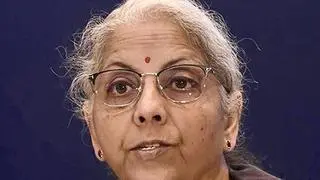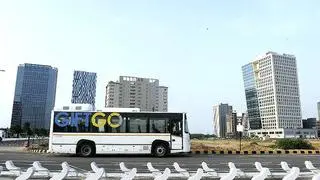India’s economic liberalisation initiated by the then Finance Minister and present Prime Minister Mr Manmohan Singh 20 years ago has come full circle and the time has come to launch the second phase of the programme so that benefits could also reach the common man.
“We have to do more. Now is the time to give the economic reforms one more push so that the poor people of the country can benefit even more,” said Ficci Secretary General Mr Rajiv Kumar in his comments on the completion of two decades of the launch of the economic liberalisation programme.
Expressing similar opinion, CII Director General Mr Chandrajeet Banjerjee said, “The time has come for the next level of economic reforms. We would like to see much more happening in sectors like education, agriculture, health care and in adoption of modern technology.”
The second generation of reforms, according to experts, would require further freeing of sectors like insurance, banking and retail, strengthening of infrastructure, streamlining of the legal system, removal of corruption, improvement of the public delivery system and creation of credible social infrastructure.
It was on this day two decades ago in 1991, the then Finance Minister Mr Manmohan Singh laid the foundation of economic reforms in his Budget speech in the Lok Sabha and announced concrete steps to decisively move away from the centralised planning regime and align India with the global economy.
Since then there has been no looking back, and the Government through a series of calibrated steps opened the Indian economy allowing foreign investments even in sectors like insurance and banking, privatising public sector undertakings and freeing the financial sector.
As a result of the economic reforms, India came out of the syndrome of the Hindu rate of growth and achieved 8-9 per cent economic expansion to become the fastest growing free market economy in the world.
India’s economic growth rate today is only second to that of China. India was growing at over 9 per cent before the global economic crisis in 2008 and is likely to revert to the same level in the 12th Five Year Plan beginning April 1, 2012.
The country, however, has not been able to effectively deal with problems of poverty and those concerning inflation and corruption as they continue to haunt the policy markers.
Besides poverty alleviation, Assocham secretary general Mr D. S. Rawat said, “The country desperately needs to improve infrastructure sector. It is necessary to boost the manufacturing sector and generate mass employment.”
Commenting on the achievements during the two decades of reforms, noted economist Mr Y. K. Alagh said, “Global competitiveness of Indian companies have increased and some Indian companies achieved Mahalnobis’s dream by acquiring large MNC’s abroad... which we could not achieve with centralised planning.”
Noting that the difference between the rich and the poor has increased after the reforms, he said, “It has increased as much in China.”
One of the major achievement of India’s economic reform, according to Crisil’s Chief Economist Mr D. K. Joshi, “is that we have been able to achieve higher growth rate. Indian economy grew by around 7 per cent on an average over the past two decades and by 9 per cent by 2005 to 2007.”
“Productivity of our enterprises increased. India is now the fastest growing economy after China. A lot of things happened on public private partnership. Per capita income of Indian increased several times,” he added.
The Government would need to expedite the second phase of reforms to achieve sustained growth, he said, while welcoming the recent decision of the Committee of Secretaries (CoS) of opening of the multi-brand retail to foreign investment.
“We can say the Government is taking gradual steps towards economic reforms,” Mr Joshi added.








Comments
Comments have to be in English, and in full sentences. They cannot be abusive or personal. Please abide by our community guidelines for posting your comments.
We have migrated to a new commenting platform. If you are already a registered user of TheHindu Businessline and logged in, you may continue to engage with our articles. If you do not have an account please register and login to post comments. Users can access their older comments by logging into their accounts on Vuukle.